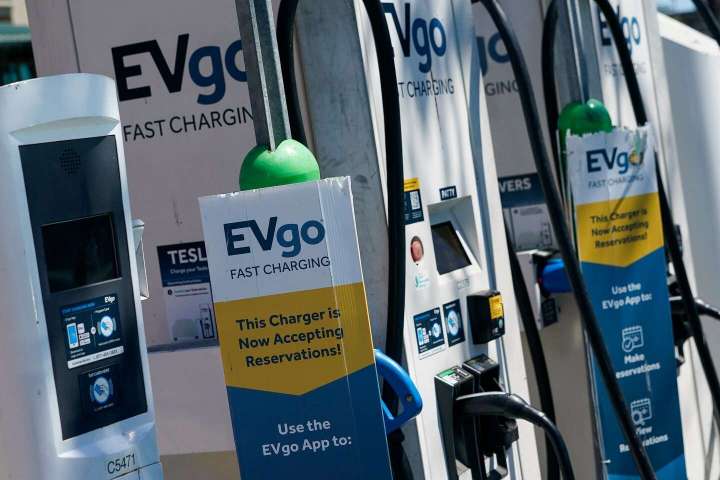It is a ritual in Washington: After long negotiation, the passage of some signature piece of major legislation is heralded as the greatest leap forward for American society since … well, insert your favorite president here, usually either FDR, LBJ or Ronald Reagan.
Yes, we need more electric vehicles. But subsidies aren’t the answer.

Which is presumably how we ended up with a shiny new bill that promises, among its many provisions to tackle climate change, extended subsidies for electric vehicles. Subsidies for which, it turns out, most existing electric vehicles will not be eligible because of impractically stringent “Buy American” rules for components.
The bad news is that this complicates life for those who are planning to buy EVs in the near future. (Sorry guys.) The good news is that it doesn’t matter much in the grand scheme of things, because subsidizing electric vehicles is the wrong way to fight climate change.
Follow Megan McArdle‘s opinions
FollowDon’t get me wrong: Electric vehicles themselves look like a great way to fight climate change. The Environmental Protection Agency estimates that even after accounting for the more carbon-intensive process for manufacturing and junking electric vehicles, and for the dirty fuels such as coal that are often burned to produce electricity, average lifetime emissions of EVs will be less than half of a typical gasoline-powered car.
But we shouldn’t try to subsidize our way to an electric future. For one thing, electric cars are no longer some untested technology that needs a push to get consumer buy-in; they are mature enough to offer consumers plenty of benefits without the help. Among other advantages, they’re quieter, cleaner and accelerate faster. With fewer moving parts, they require considerably less maintenance. And of course, they’re a lot greener, which many consumers value.
They do cost more up front to manufacture, which is what the subsidies are supposed to allay. But a recent survey from Consumer Reports found that this aspect ranks as only the third-biggest concern of potential buyers, behind worries about the cars’ range and finding a place to charge.
That’s why our legislative energies would be much better spent on fixing the myriad problems with our nation’s charging infrastructure. Starting with the fact that at least one-third of Americans don’t have easy access to charging, often because they park on the street or live in a multiunit dwelling that doesn’t make it easy to get a charger installed in a common garage. These are, of course, often city dwellers who would otherwise be some of the best candidates for going all-electric.
We also desperately need to do something about the inefficient patchwork of state and local regulations as well as the utility rules that slow the installation of fast new charging stations — while driving up the cost.
The Biden administration is planning a network of 500,000 charging stations, using $5 billion from last year’s infrastructure deal. But a recent McKinsey report suggests this is less than half what’s needed. All the subsidies in the world won’t induce people to go electric unless they can be sure of finding somewhere to charge when they need it.
Of course, one might say, “Why not do both?” The answer is that to be truly revolutionary, electric vehicles need to be attractive without hefty subsidies. And if the U.S. government keeps artificially pushing down prices, automakers won’t have the incentive to create the vehicles we really need.
The biggest climate threats no longer come from developed countries, which can afford to subsidize electric cars. The bulk of future emissions growth is going to come from developing countries where citizens long to enjoy a lifestyle comparable to ours — which means, given population numbers that dwarf the rich world, they will generate many times our emissions unless they can achieve that lifestyle at a much lower carbon footprint.
The only way out of this mess is to invent technologies that are actually superior to the dirty, polluting methods we used to get rich. And by “superior,” I don’t just mean cleaner. I mean they have to be cost effective.
The top priority of those governments, understandably, is raising the living standards of their citizens, not fighting climate change. It’s no good developing beautifully green electric vehicles that are only attractive to consumers with massive subsidies from governments with deep pockets.
That’s why the big mistake in the new bill wasn’t designing EV subsidies no one can use, but trying to subsidize EVs in the first place. While that might look like the shortest way to the clean, green world we want, when you actually consider the whole world, it starts to look like the longest way around.






